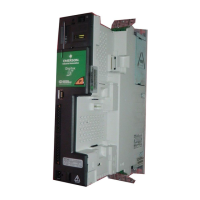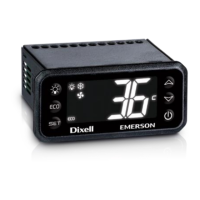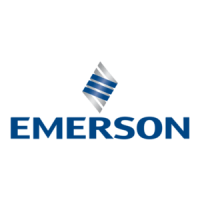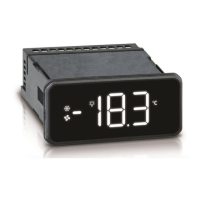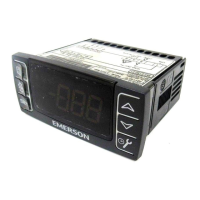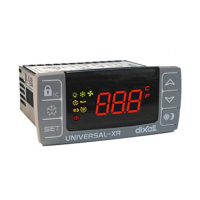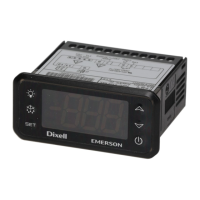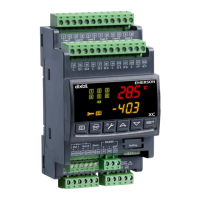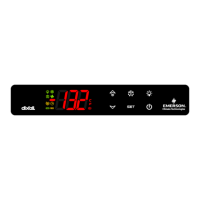Do you have a question about the Emerson DSM314 and is the answer not in the manual?
Details on the high performance, ease of use, and versatile I/O of the DSM314.
Explains the DSM314 as a motion control option module for Series 90-30 and PACSystems RX3i.
Describes Standard Mode and Follower Mode operations for the DSM314.
Instructions for unpacking the DSM314, digital servo amplifiers, and motors.
General guidelines and connection details for assembling the DSM314 system.
Explains the configuration and programming software interface for the DSM314.
Identifies the module's major hardware features including LEDs, connectors, and grounding.
Details the types of I/O circuits and provides pin assignments for axis connectors.
Describes the Digital Servo Axis Terminal Board and its screw terminal assignments.
Details on connecting the configuration/programming software interface to the host controller.
Defines the type and location of modules in PLC racks, saved to a configuration file.
Covers setting configuration parameters like Module Configuration Data, SNP Port, CTL Bits, etc.
Details the %I Status Bits transferred from DSM314 to the CPU each sweep.
Defines the %Q Outputs representing Discrete Commands sent from CPU to DSM314.
%AQ Immediate Command words transferred from CPU %AQ data to DSM314.
Explains how to establish a correct Actual Position relative to a machine reference point.
Details the configuration parameters for Jog Velocity, Jog Acceleration, and Jog Acceleration Mode.
Describes how to generate a Move at Velocity %AQ command by placing value 22h in the first word.
Explains that a single-axis program contains statements for one axis only, and may run independently.
Covers programs/subroutines using Axis 1 and Axis 2, requiring home referencing.
Details the number of programs, subroutines, and statements supported by the DSM314.
Identifies eight possible master input sources for DSM314 Servo Axis configuration.
Details how DSM314 axis following a master input can do so at various slave:master ratios.
Describes using Velocity Limit in Configuration software to clamp following axis velocity.
Introduces basic Local Logic programming concepts, deterministic execution, and communication.
Provides information on using Local Logic and Motion Program editors for creation and download.
Explains the self-contained environment for creating, editing, and downloading Local Logic programs.
Covers assignment and conditional statements, including syntax and examples.
Explains predefined variables for accessing DSM I/O, CTL bits, and status information.
Provides sample programs for illustration, including Torque Limiting and Gain Scheduling.
Describes syntax rules, language elements, commands, and operand types.
Lists and explains runtime errors like Overflow, Divide by Zero, and Watchdog Timeouts.
Categorizes error messages into syntax, parse, and parse warnings.
Describes variable types (Global, Per-Axis), attributes (Read-Only, Write-Only), and sizes.
Describes the 8192-byte Circular Buffer for data storage and retrieval by Local Logic.
Explains configuration of Digital Outputs and CTL bits for host controller or Local Logic control.
Allows configuration of input sources for CTL bits (CTL01-CTL24) via Hardware Configuration.
Lists allowed configuration values and descriptions for CTL01-CTL24 bits.
Introduces electronic CAM function for complex motions requiring tight axis synchronization.
Covers CAM feature syntax, rules, and error codes, including CAM types.
Introduces basic electronic CAM programming concepts and required software.
Details error codes reported in %AI table locations for module and axis errors.
Provides guidelines for isolating problems associated with various servo alarms.
Describes two types of COMM REQ ladder instructions: Parameter Load and User Data Table.
Details the Command Block structure for loading DSM Parameter Memory.
Covers battery pack use, position initialization, and DSM314 power-up for absolute encoders.
Outlines procedures for validating home switch, over travel inputs, motor direction, and tuning loops.
Covers startup procedures for Analog Velocity and Analog Torque Interface systems.
Provides information to determine local logic program execution time and avoid watchdog timeouts.
Steps for updating firmware using Winloader software on Windows operating systems.
Procedures for restarting firmware upgrade if it was interrupted.
Explains strobe position value accuracy based on input filtering and sampling delay.
Introduces VersaPro software and requirements for use with DSM314.
Provides information on configuring the DSM314 module within the hardware configuration.
Details connecting to the PLC and storing the configuration file.
Guides through creating, editing, storing, and downloading Motion programs using the Motion Editor.
Guides through creating, editing, storing, and downloading a Local Logic program.
Outlines steps for creating a CAM block and profile, linking, configuring, and saving it.
Details on the high performance, ease of use, and versatile I/O of the DSM314.
Explains the DSM314 as a motion control option module for Series 90-30 and PACSystems RX3i.
Describes Standard Mode and Follower Mode operations for the DSM314.
Instructions for unpacking the DSM314, digital servo amplifiers, and motors.
General guidelines and connection details for assembling the DSM314 system.
Explains the configuration and programming software interface for the DSM314.
Identifies the module's major hardware features including LEDs, connectors, and grounding.
Details the types of I/O circuits and provides pin assignments for axis connectors.
Describes the Digital Servo Axis Terminal Board and its screw terminal assignments.
Details on connecting the configuration/programming software interface to the host controller.
Defines the type and location of modules in PLC racks, saved to a configuration file.
Covers setting configuration parameters like Module Configuration Data, SNP Port, CTL Bits, etc.
Details the %I Status Bits transferred from DSM314 to the CPU each sweep.
Defines the %Q Outputs representing Discrete Commands sent from CPU to DSM314.
%AQ Immediate Command words transferred from CPU %AQ data to DSM314.
Explains how to establish a correct Actual Position relative to a machine reference point.
Details the configuration parameters for Jog Velocity, Jog Acceleration, and Jog Acceleration Mode.
Describes how to generate a Move at Velocity %AQ command by placing value 22h in the first word.
Explains that a single-axis program contains statements for one axis only, and may run independently.
Covers programs/subroutines using Axis 1 and Axis 2, requiring home referencing.
Details the number of programs, subroutines, and statements supported by the DSM314.
Identifies eight possible master input sources for DSM314 Servo Axis configuration.
Details how DSM314 axis following a master input can do so at various slave:master ratios.
Describes using Velocity Limit in Configuration software to clamp following axis velocity.
Introduces basic Local Logic programming concepts, deterministic execution, and communication.
Provides information on using Local Logic and Motion Program editors for creation and download.
Explains the self-contained environment for creating, editing, and downloading Local Logic programs.
Covers assignment and conditional statements, including syntax and examples.
Explains predefined variables for accessing DSM I/O, CTL bits, and status information.
Provides sample programs for illustration, including Torque Limiting and Gain Scheduling.
Describes syntax rules, language elements, commands, and operand types.
Lists and explains runtime errors like Overflow, Divide by Zero, and Watchdog Timeouts.
Categorizes error messages into syntax, parse, and parse warnings.
Describes variable types (Global, Per-Axis), attributes (Read-Only, Write-Only), and sizes.
Describes the 8192-byte Circular Buffer for data storage and retrieval by Local Logic.
Explains configuration of Digital Outputs and CTL bits for host controller or Local Logic control.
Allows configuration of input sources for CTL bits (CTL01-CTL24) via Hardware Configuration.
Lists allowed configuration values and descriptions for CTL01-CTL24 bits.
Introduces electronic CAM function for complex motions requiring tight axis synchronization.
Covers CAM feature syntax, rules, and error codes, including CAM types.
Introduces basic electronic CAM programming concepts and required software.
Details error codes reported in %AI table locations for module and axis errors.
Provides guidelines for isolating problems associated with various servo alarms.
Describes two types of COMM REQ ladder instructions: Parameter Load and User Data Table.
Details the Command Block structure for loading DSM Parameter Memory.
Covers battery pack use, position initialization, and DSM314 power-up for absolute encoders.
Outlines procedures for validating home switch, over travel inputs, motor direction, and tuning loops.
Covers startup procedures for Analog Velocity and Analog Torque Interface systems.
Provides information to determine local logic program execution time and avoid watchdog timeouts.
Steps for updating firmware using Winloader software on Windows operating systems.
Procedures for restarting firmware upgrade if it was interrupted.
Explains strobe position value accuracy based on input filtering and sampling delay.
Introduces VersaPro software and requirements for use with DSM314.
Provides information on configuring the DSM314 module within the hardware configuration.
Details connecting to the PLC and storing the configuration file.
Guides through creating, editing, storing, and downloading Motion programs using the Motion Editor.
Guides through creating, editing, storing, and downloading a Local Logic program.
Outlines steps for creating a CAM block and profile, linking, configuring, and saving it.
| Brand | Emerson |
|---|---|
| Model | DSM314 |
| Category | Controller |
| Language | English |


